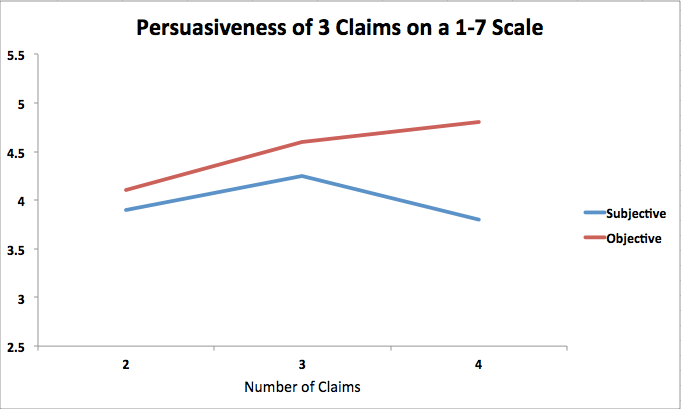
Is this dieting pill overpromising? Source: Fenfast.
Omne trium perfectum
~Latin saying for “Everything that comes in threes is perfect
Life, liberty, and the pursuit of happiness; The Three Little Pigs; an Englishman, a Scotsman, and an Irishman walk into a bar: Whether you’re trying to be memorable, eloquent, or funny, following the Rule of 3 seems to be the way to go.
It’s hard to say what exactly makes the Rule of 3 so powerful — why we prefer the phrase “blood, tears, and sweat” to the phrase “blood, toil, tears, and sweat,” to take an example from Winston Churchill’s speeches. It could have to do with stories coming in beginnings, middles, and ends. Three data points is enough to establish a pattern that can be broken with a twist ending, as in the 3 Little Pigs or jokes about 3 people in a bar. The conciseness is also nice.
In the great American tradition, two marketing professors have now applied the rule to selling breakfast cereal.
A central problem for marketers is how to convince consumers of their products’ value. How long will customers listen to all the benefits of starting their day with Cheerios before they dismiss everything as manipulative bunk?
According to the 2 professors, Suzanne Shu of UCLA and Kurt Carlson of Georgetown, the answer is the rule of 3: Making up to 3 claims about a product’s value is effective advertising — any more than that, and people’s cynical defenses kick in.
To test the effectiveness of the rule of 3 in marketing, the professors recruited university students to read statements that made a varying number of claims about a product or person. For example, some participants read cereal packaging that claimed the cereal is:
“Healthier, better tasting, crunchier, sweeter, organic, and with higher quality ingredients.”
Others read packaging with only a few of these adjectives. The researchers also had participants read the information from either an objective source (like Consumer Reports) or a subjective source like cereal packaging. The students then rated how convinced they were on a scale from 1 to 7.

Chart adapted from Journal of Marketing, “When Three Charms But Four Alarms”
As the results in the above chart show, the rule of 3 holds for marketers. When the information is from an objective source, consumers take more and more claims and listed benefits as simply greater evidence of its worth. But for marketers or someone trying to persuade, 3 is the peak number of claims that can be made without straining credibility.
The professors believe that people react negatively to too much information from a subjective source because a preponderance of claims increases their skepticism. Consumers may believe two claims about the value of a toothpaste, but how can you believe a salesman claiming it’s better in every possible way? A follow up experiment in which university students rated their feelings about a product as well as their skepticism of its marketed benefits provides additional evidence: After 3 claims, skepticism shoots up and perceptions become increasingly negative.
So for hawkers of miracle products, take this to heart: you can make 3 extraordinary claims, but never four.
This post was written by Alex Mayyasi. Follow him on Twitter here or Google Plus. To get occasional notifications when we write blog posts, sign up for our email list.



